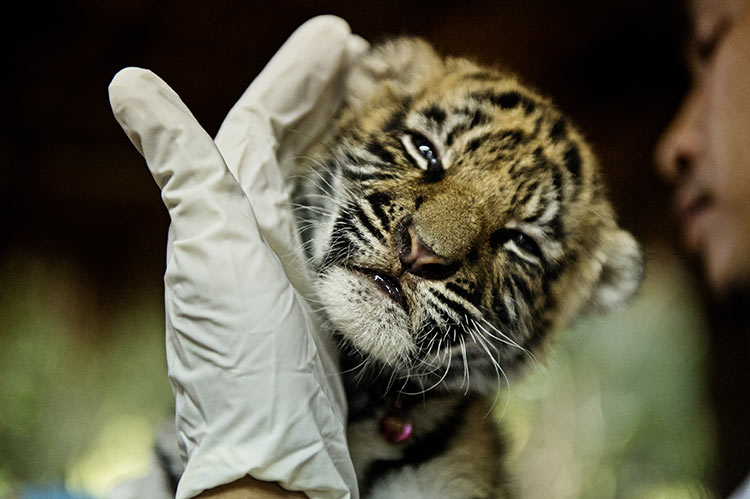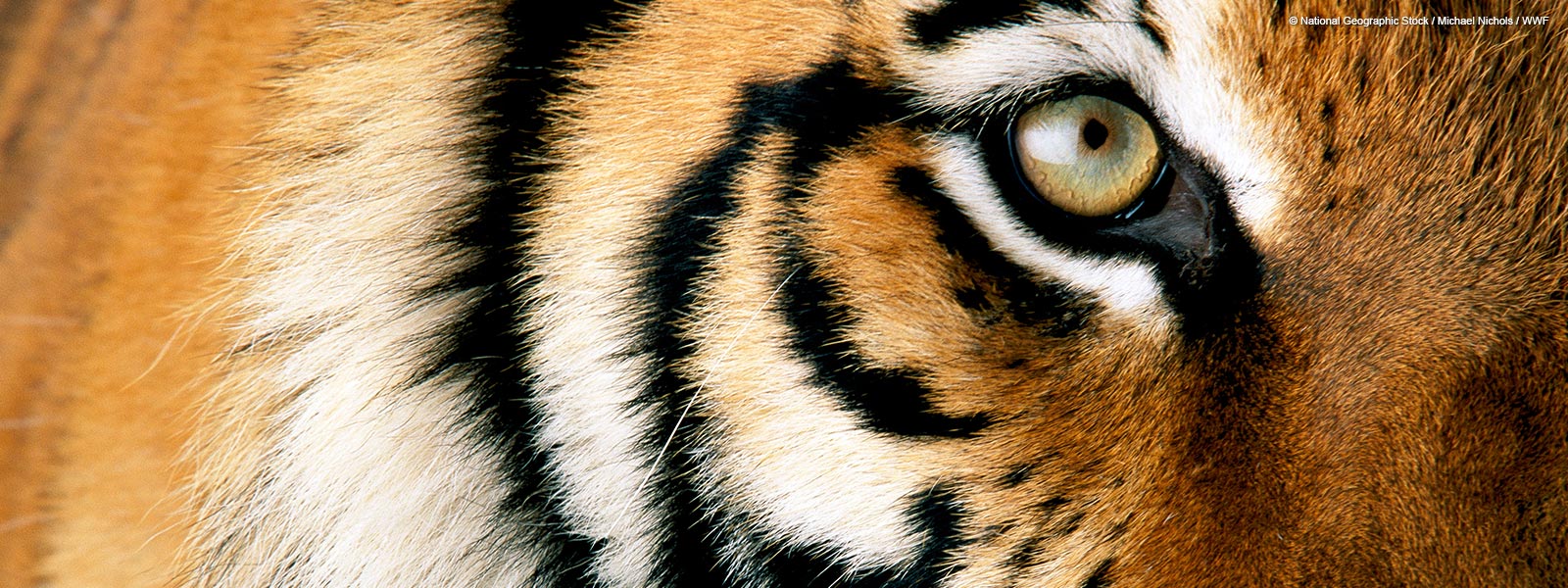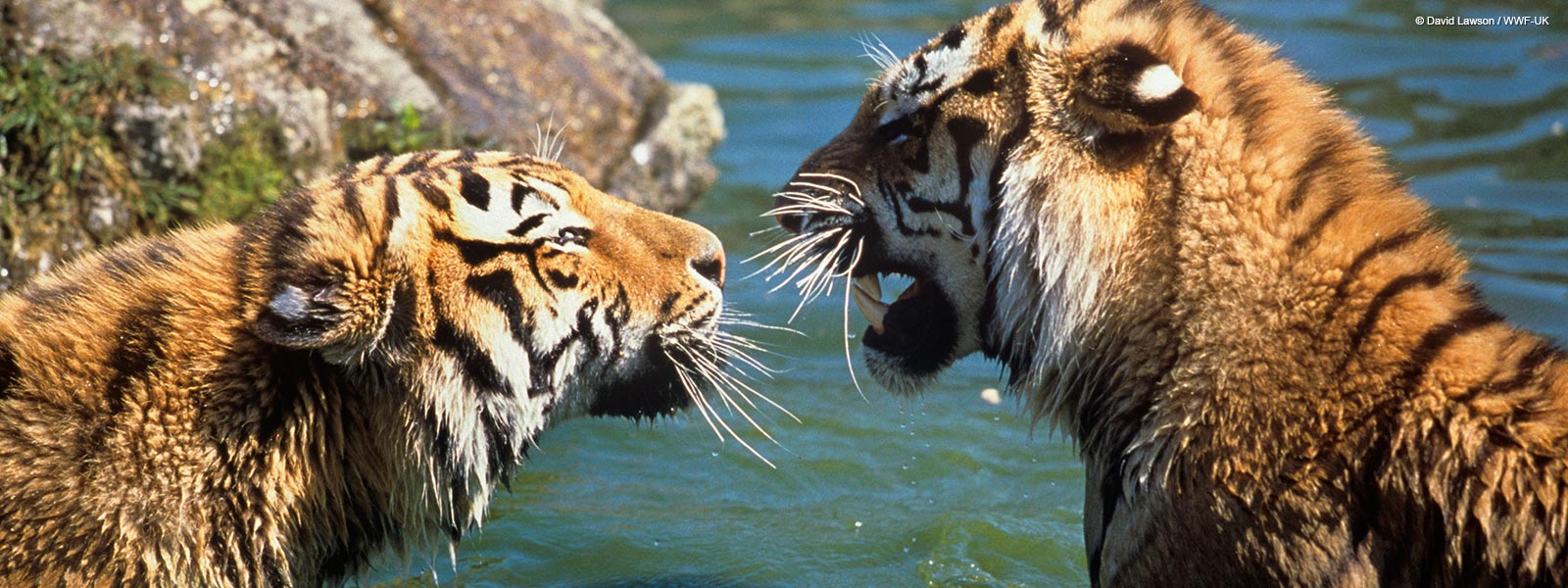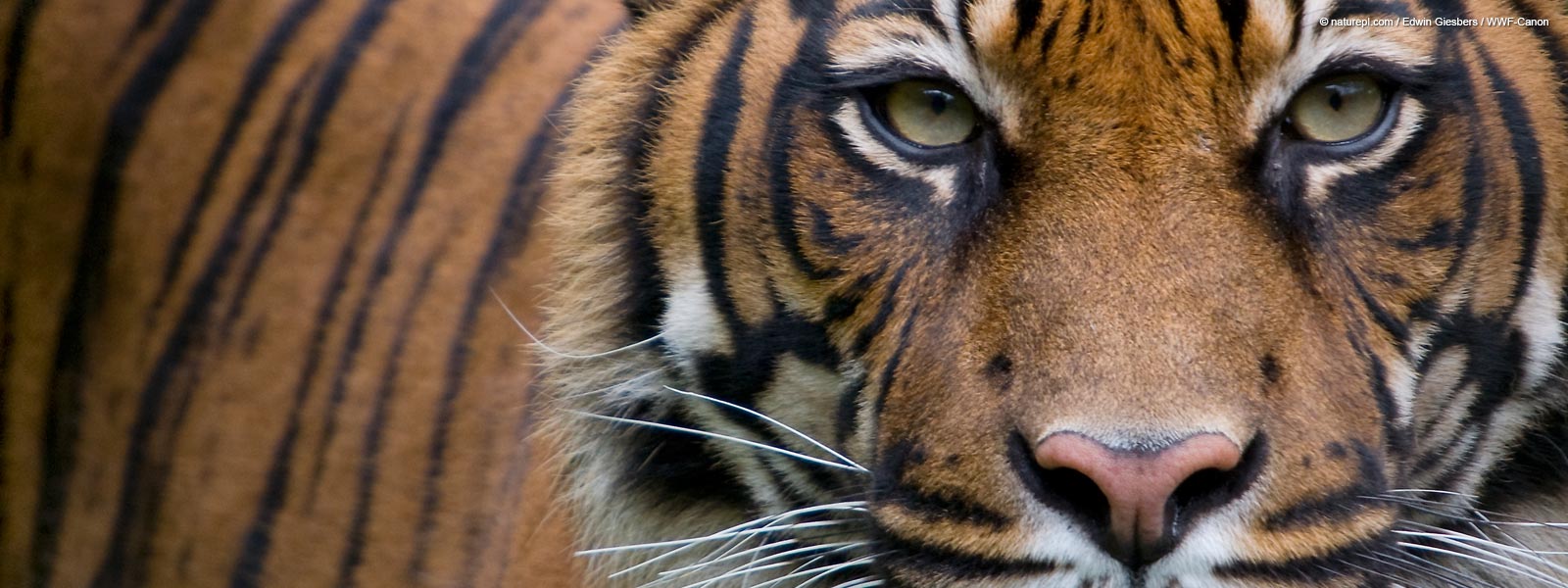The Life of the Tiger
The tiger is the largest of the cat family and the third largest carnivore in the world. The allure it exerts on humans has made it the subject of myths and traditions in many cultures.
Rather than their sense of smell, tigers use mostly their sight and hearing to track down their prey. They usually hunt individually, lying in ambush and making the best of the element of surprise. In some parts of India, it is said that local populations would go into the forest with tiger faces painted on their backs, to give them the impression of looking right at them and prevent them from attacking them.
Tigers live solitary lives. Each one has a territory that it considers its own, where it roams and hunts throughout its life. The territories of male tigers are wider than those of the female and range from 30–70 square kilometers (Nepal) to 800–1,000 square kilometers (Siberia) depending on the availability of prey. The tiger’s hunting success is not guaranteed; quite possibly, only one out of ten attempts will provide it with food. Tigers can go several days without eating and, when they finally get their prey, they can consume up to 40 kilograms of meat at one time!
Unlike most cats, they are keen swimmers and can easily swim several kilometers to cross rivers or lakes. They give birth to 2–3 cubs roughly every 2 years, but about half of the cubs do not survive more than 2 years.
Life under Threat
Today the tiger is globally threatened with extinction. 97% of its population has been lost during the past 100 years. Only 3,200 tigers remain in the wild, a lot fewer than those living in captivity in zoos around the world.
The dense forests that are the tigers’ habitat are rapidly vanishing. Large corporations acquire and clear tropical forest areas for timber or to convert them to palm tree plantations for palm-oil production. At the same time, the expansion of development into tiger territories is accompanied by road building, which increasingly isolates tigers. Today, tigers are struggling to survive in small and isolated patches of dense vegetation, which cover only 7% of their historic range. During the past ten years alone, tiger habitats have shrunk by 45%.
Still, today the greatest direct threat to tigers is illegal wildlife trade. Tigers are sold for their skin as well as their body parts that are used in traditional Asian medicine for their alleged magical qualities. Even though the World Federation of Chinese Medicine Societies has officially renounced their use, the illegal demand for them is so high that in today’s Asian markets a dead tiger’s price can reach 70,000 dollars.
The life We Protect
Tiger conservation means conservation of the Asian forests where they live. Conserving a tiger, we are actually conserving entire forest ecosystems and the diversity of life that they host and securing the services that they offer. In addition, conservation programs and tourism generate additional income for poor local agricultural communities.

© WWF-Canon / James Morgan
In 2013, we launched our global campaign against illegal wildlife trade. Even though it is the 5th largest illegal trade network in the world, it is handled with levity and smugglers often get away with rather lenient sentences.
Share this









